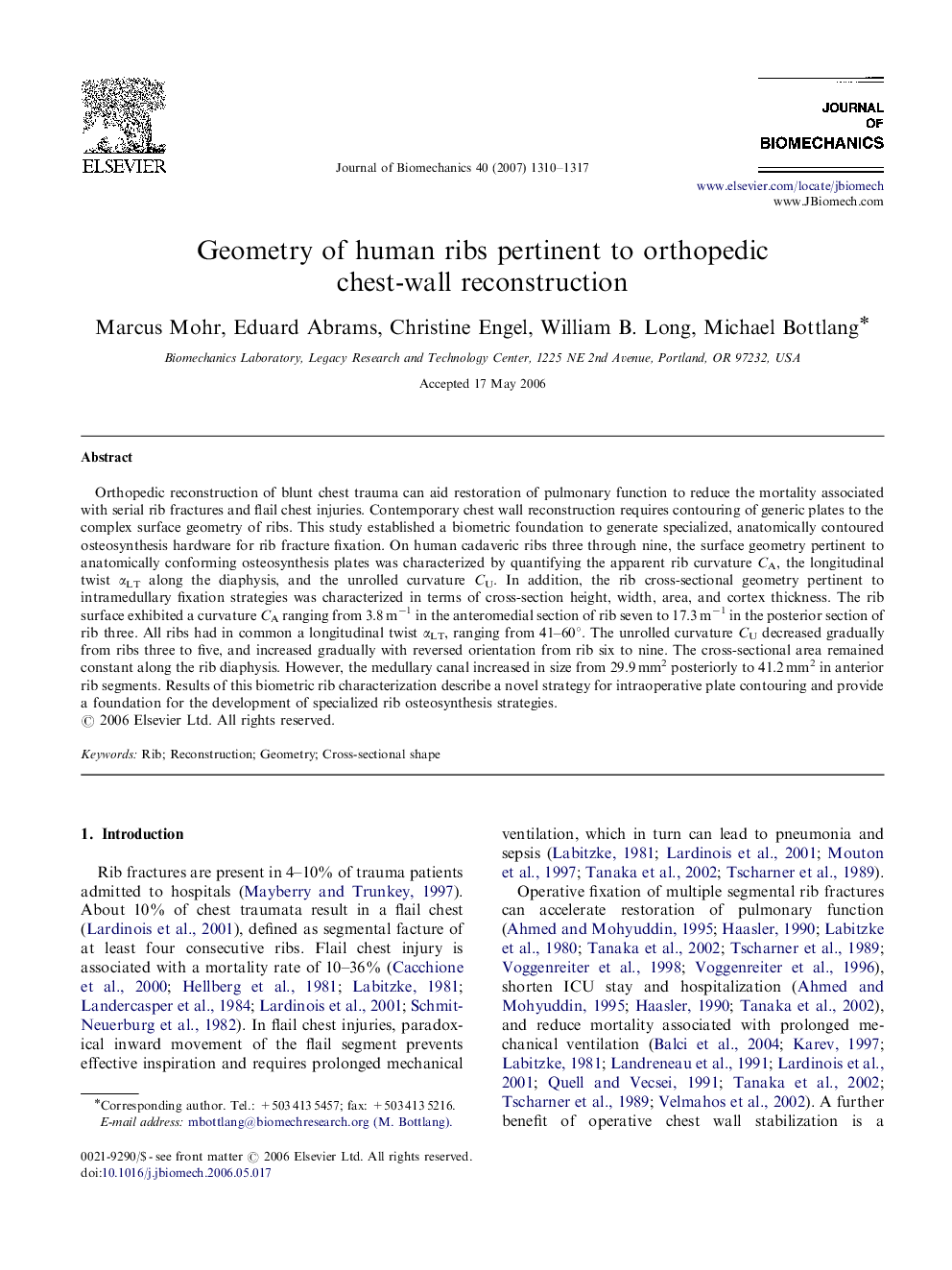| Article ID | Journal | Published Year | Pages | File Type |
|---|---|---|---|---|
| 874544 | Journal of Biomechanics | 2007 | 8 Pages |
Orthopedic reconstruction of blunt chest trauma can aid restoration of pulmonary function to reduce the mortality associated with serial rib fractures and flail chest injuries. Contemporary chest wall reconstruction requires contouring of generic plates to the complex surface geometry of ribs. This study established a biometric foundation to generate specialized, anatomically contoured osteosynthesis hardware for rib fracture fixation. On human cadaveric ribs three through nine, the surface geometry pertinent to anatomically conforming osteosynthesis plates was characterized by quantifying the apparent rib curvature CA, the longitudinal twist αLT along the diaphysis, and the unrolled curvature CU. In addition, the rib cross-sectional geometry pertinent to intramedullary fixation strategies was characterized in terms of cross-section height, width, area, and cortex thickness. The rib surface exhibited a curvature CA ranging from 3.8 m−1 in the anteromedial section of rib seven to 17.3 m−1 in the posterior section of rib three. All ribs had in common a longitudinal twist αLT, ranging from 41–60°. The unrolled curvature CU decreased gradually from ribs three to five, and increased gradually with reversed orientation from rib six to nine. The cross-sectional area remained constant along the rib diaphysis. However, the medullary canal increased in size from 29.9 mm2 posteriorly to 41.2 mm2 in anterior rib segments. Results of this biometric rib characterization describe a novel strategy for intraoperative plate contouring and provide a foundation for the development of specialized rib osteosynthesis strategies.
